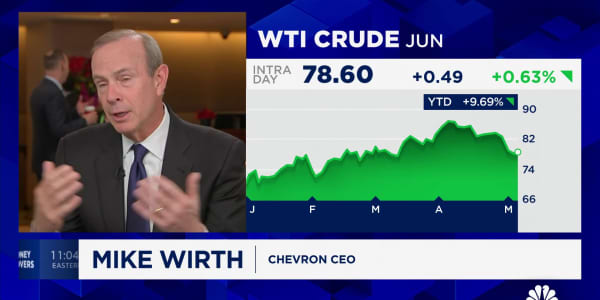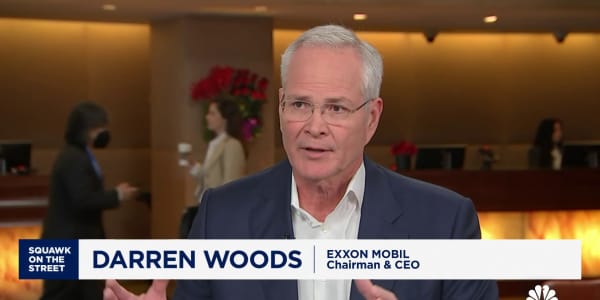
This has been the scariest week in stock market history, at least by one significant measure.
Though the market's certainly seen larger downturns, and in fact is on pace to end the week in positive territory, it's never witnessed investors flee for the exits in the manner they did since the first correction in four years briefly but violently came raining down on Wall Street.
In all, equity-based funds saw $29.5 billion in outflow for a week that featured gut-churning moves in the market, according to Bank of America Merrill Lynch and EPFR. The period included a 588-point loss in the Dow Jones industrial average on Monday, followed by another 205-point loss Tuesday that included a more than 600-point reversal, and then sharp gains Wednesday and Thursday.
During Tuesday's flip-flop alone, equity fund investors cashed in $19 billion of the $10.5 trillion or so of global equity funds under management. That was the second-largest daily redemption since at least 2007, according to BofAML.
In such times, it's typical for investors to gravitate from stocks to bonds. However, that hasn't been happening.
Bond funds saw $11.7 billion in outflows for the week, which was the largest in more than two years. The fixed-income carnage was across the board: $4.9 billion from high yield, $4.2 billion from emerging markets, $3.8 billion from investment grade and $800 million from bank loans.
Read More Money flees US stocks at highest level since 1993
The only bond fund category to take in cash for the week was U.S. Treasurys, which saw net inflows of $1.7 billion, marking the category's eighth-straight week of inflows.
Safe havens were the big winners on the week. Money markets attracted $22 billion while precious metals saw inflows of $1.1 billion. Money market funds have had net inflows for eight consecutive weeks, bolstering cash on the sidelines to just shy of $2.7 trillion, the latter figure according to the Investment Company Institute. That's the highest level since January.
Individual ETFs that did well included the , which took in $467 million; iShares MSCI USA Minimum Volatility ($342 million), and the SPDR Gold Shares fund, which attracted $333 million. The SPDR S&P 500 Trust was the big loser with an exodus of $4.3 billion, according to Thomson Reuters.
While the run on equity funds and move to the zero-yielding sidelines was accelerated by the market mayhem this week, it's part of a broader trend taking place that has some Wall Street experts on the lookout.
Read More Seven reasons why the market has gone totally nuts
"The latest weekly data for July and early August show net outflows from mutual funds are picking up, suggesting an increase in household risk aversion," Credit Suisse economists Dana Saporta and Axel Lang said in a report for clients. "Perhaps of greater interest is the fact that these net withdrawals are coming from both bond and equity funds, a rare occurrence."
In fact, if current trends hold, July and August will market the first consecutive monthly net outflow from both bond and equity funds since late 2008.
So it's not just the recent turmoil that has investors upset. It's the general landscape of a market in which the remains down about 3.5 percent for the year and the Dow off about 6.7 percent.
Saporta and Lang attribute the outflow trend not simply to a worry over the stock market, but also to concerns that bonds also aren't a terribly safe investment, particularly with expectations, valid or not, of a rising interest rate environment.
Market participants had been expecting the Federal Reserve to hike its funds rate in September after nearly seven years anchored close to zero. Traders now have pushed that date back to December, though many Wall Street economists believe September is still in play.
"In the months ahead, we look for the Federal Reserve to initiate policy normalization with a 25 (basis point) rate hike. Since 'normalcy' implies higher interest rates, bond mutual fund holders likely will see losses on their investments," the Credit Suisse economists wrote. "It may be that the intensity of the recent equity market declines have tested the risk tolerance of retail investors who have shown no desire in recent years to take another wild market ride."






